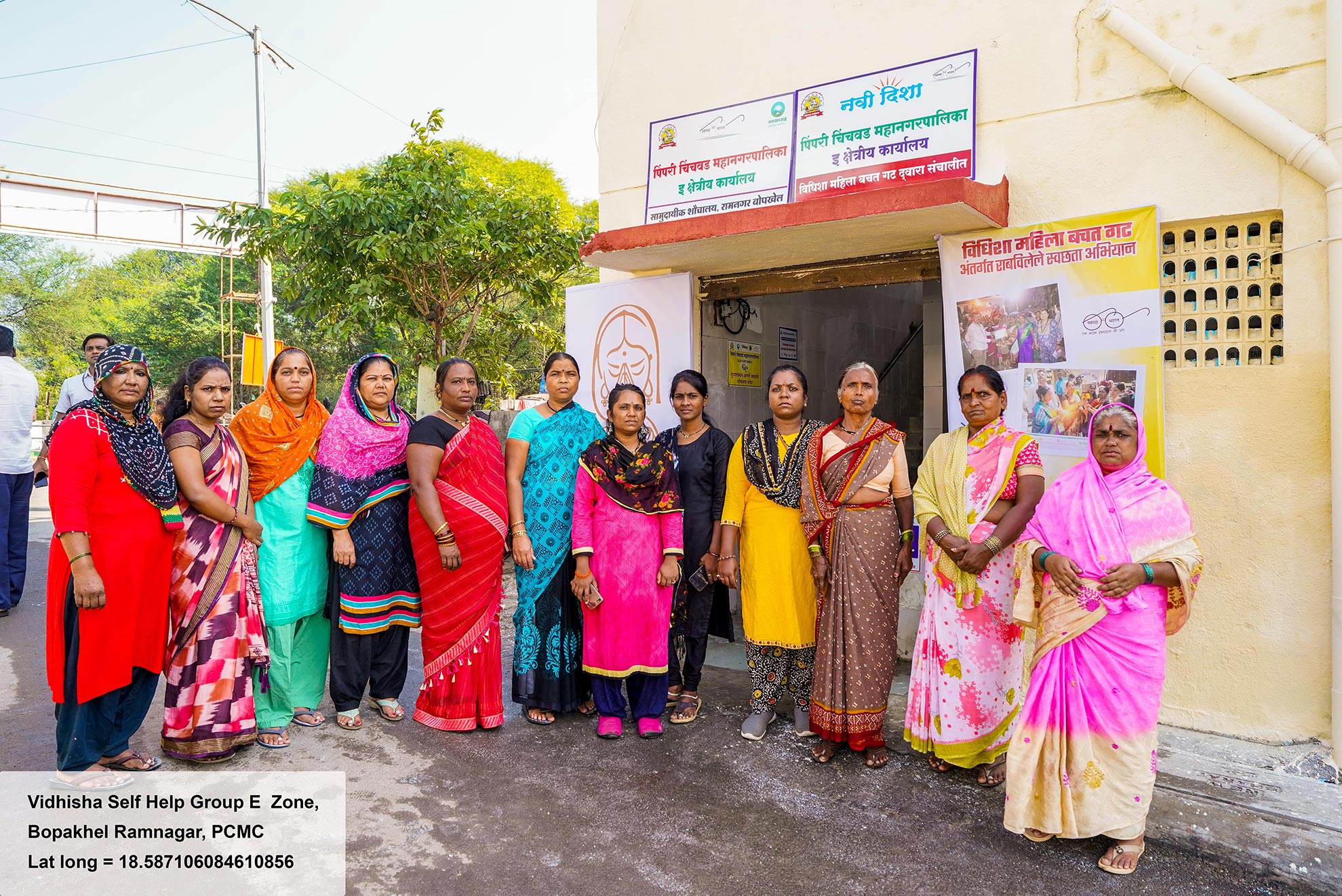Pimpri Chinchwad, India
Navi Disha: community toilet model

Basic Data
Population size: 2,500,000
Population Growth Rate(%): 47.00
Surface Area (sq.km):181
Population Density (people/sq.km):9,600
GDP Per Capita(U.S.S):60,750
The Indian city of Pimpri Chinchwad being a prominent industrial hub, hosts a significant number of migratory industrial labourers who have established residence in low-income settlement areas. City has 160 Community Toilets that provide clean and hygienic sanitation facilities in these areas. Under the Navi Disha initiative, women from the targeted communities have formed groups that have taken responsibility for operating and maintaining the community toilets ensuring superior sanitation standards.
Round of discussions were conducted with the communities for conceiving the initiative. Women within these settlements came forwards to take up the operation and maintenance of the community toilet in their area.
Along with training in community toilet management, the municipality also makes a monthly payment to each women’s group to cover the cost of sanitation equipment and cleaning materials to generate revenue streams for the women’s groups.
The initiative is a good example of gender mainstreaming in the sanitation value chain along with effective public-community partnerships and agile administration. Over 400 women are now engaged within the initiative managing 40 toilets with total of 862 toilet seats. Over 30,000+ beneficiaries are getting access to clean and safe toilets every day. With overwhelming interest from other women groups, municipality has planned to scale over 120 community toilets under Navi Disha, with engagement of over 1,200 women and increasing the beneficiaries by at least three folds by June 2024.
The municipality aspires to introduce the women groups to alternative revenue streams, involving them in decision making for future initiatives such as women-led sustainable Solid Waste Management and establishing robust feedback and monitoring mechanisms.
-
 City Stories | S?o José dos Pinhais, Brazil Digital Technology and Social Participation in Surveillance and Definition of Priority Areas and Actions for the Control of Yellow Fever in Brazil
City Stories | S?o José dos Pinhais, Brazil Digital Technology and Social Participation in Surveillance and Definition of Priority Areas and Actions for the Control of Yellow Fever in Brazil -
 Echo of Cities | Xianning, China: Co-creating a new chapter in a child-friendly city
Echo of Cities | Xianning, China: Co-creating a new chapter in a child-friendly city -
 Empowering a Low-Carbon Future through Urban Innovation
Empowering a Low-Carbon Future through Urban Innovation -
 City Stories | Los Angeles, USA:Open-Source Tools for Action on the SDGs
City Stories | Los Angeles, USA:Open-Source Tools for Action on the SDGs


 City Stories | S?o José dos Pinhais, Brazil Digital Technology and Social Participation in Surveillance and Definition of Priority Areas and Actions for the Control of Yellow Fever in Brazil
City Stories | S?o José dos Pinhais, Brazil Digital Technology and Social Participation in Surveillance and Definition of Priority Areas and Actions for the Control of Yellow Fever in Brazil Echo of Cities | Xianning, China: Co-creating a new chapter in a child-friendly city
Echo of Cities | Xianning, China: Co-creating a new chapter in a child-friendly city Empowering a Low-Carbon Future through Urban Innovation
Empowering a Low-Carbon Future through Urban Innovation City Stories | Los Angeles, USA:Open-Source Tools for Action on the SDGs
City Stories | Los Angeles, USA:Open-Source Tools for Action on the SDGs




















 Tel: +86 20 3780 4434
Tel: +86 20 3780 4434 Email: info@guangzhouaward.org
Email: info@guangzhouaward.org Address: Rm 1609, FuLiXinTianDi, No.307 Guangzhou Dadao Zhong, Yuexiu District, Guangzhou, Guangdong, 501600, PRC
Address: Rm 1609, FuLiXinTianDi, No.307 Guangzhou Dadao Zhong, Yuexiu District, Guangzhou, Guangdong, 501600, PRC




